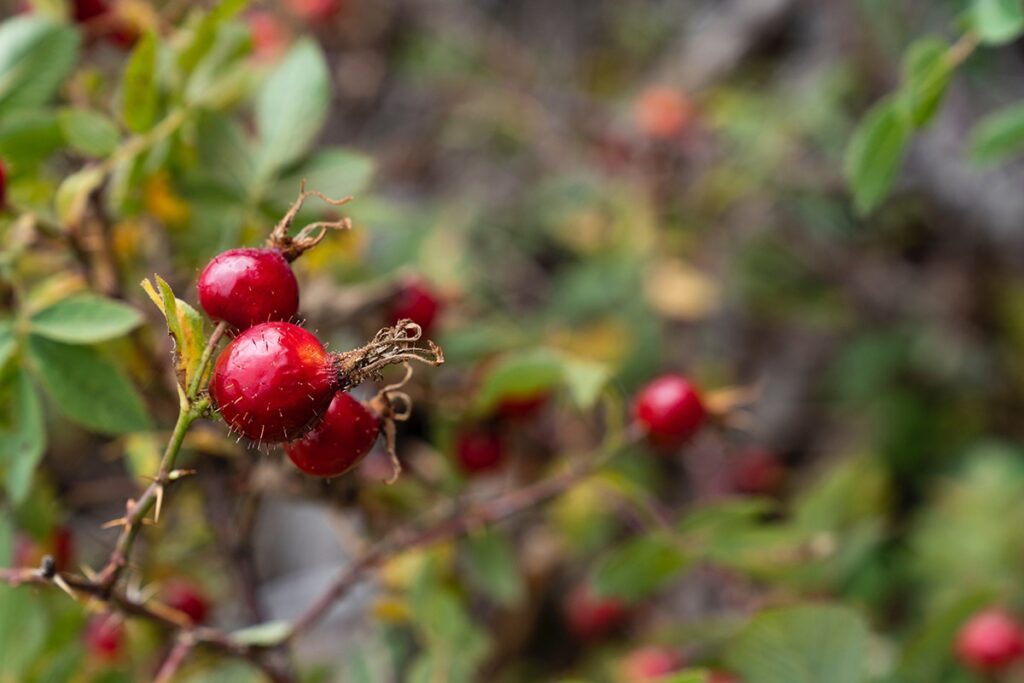Rose hips have been used for centuries in traditional and folk medicine for their anti-inflammatory and pain-relieving properties.
They are the beautiful red, orange, maroon, or yellow seedpods that decorate rose bushes in fall and winter. Rosehips start out as tiny, green pea-like swellings just beneath the sepals that underlie rose petals. As the season progresses and rose seeds develop, the hips grow larger and more colorful.
The first rule in growing rosehips is this: resist the urge to deadhead.
Deadheading removes the very flowers whose ovaries become rosehips. You needn’t sacrifice flowers for hips, however, if you select varieties with long bloom times. Remove early blooms to promote additional flowers. Allow later flowers to remain on the plants and develop into hips.

The size, color and number of rosehips depend on the variety much as rose flowers do.
Old-fashioned rugosa roses are prized not just for their corrugated green leaves and plentiful flowers, they are also valued for their abundance of large rosehips. Rosa rugosa is native to northern China, Korea and Japan and is noted for having excellent disease resistance. It can make an impenetrable due to abundant sharp thorns or used in sandy soils for erosion control. One of the most beautiful varieties of this species is Rosa rugosa ‘Alba Plena’.
Since modern hybrids are bred for bloom, they are not necessarily good hip choices.
If your tastes run to modern, however, many hybrid musks make handsome hips. Consider the repeat bloomer ‘Penelope’ with its creamy yellow and peach flowers and large, pink-to orange hips. ‘Kathleen’ makes huge clusters of pink blush flowers and as many large, orange hips. ‘Ballerina,’ another hybrid musk, has pink blooms with bright yellow stamens and oval, orange-red hips.
– by John Bagnasco
